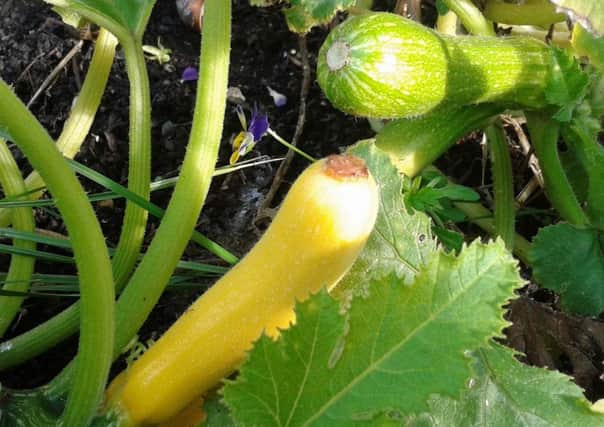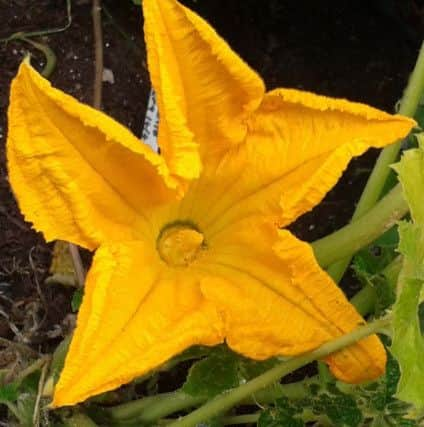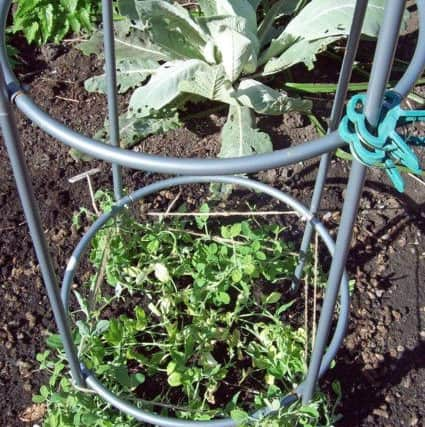GARDENING: Courgettes, a pretty vegetable but not to everyone's taste
This article contains affiliate links. We may earn a small commission on items purchased through this article, but that does not affect our editorial judgement.


Two plants are quite enough to supply an average household.
I recommend Cavili (pale green with a creamy flesh), which is parthenocarpic – it has the ability to set fruit without pollination.


It manages to perform even when weather conditions are dull and chilly – more often than not in north east England.
Advertisement
Hide AdAdvertisement
Hide AdHowever, this year I’m giving Tuscany a try, a traditional dark green variety. Parador, with golden skin, also performs well.
People are often stuck with what to do with courgettes – you can only put up with so many fritters – and life is too short to stuff them, or their flowers.
Make sure you pick them young and tender, about six inches long.


However, courgettes, like carrots and beetroot, make excellent, moist cakes.
Advertisement
Hide AdAdvertisement
Hide AdIt’s my advice to tell no one what’s in a recipe. What they don’t know won’t hurt them.
GROW UNDER COVERS UNTIL PLANTING OUT AFTER LAST FROST
Sowing time: April-May under glass in a heated propagator, one seed sown sideways in a 3” pot. Grow on under glass in cooler conditions, before hardening off after the last frosts and planting outside.


Harvesting time: July-October.
Planting distance: 90cm (3ft) apart.
Aspect and soil: Full sun, light, well-drained. Keep well watered, feed once a fortnight with tomato fertiliser.
Hardiness: Tender.


Difficulty: Moderate – can be badly affected by poor weather conditions and powdery mildew if damp or crowded, and Cucumber Mosaic Virus.
Advertisement
Hide AdAdvertisement
Hide AdRecommended varieties: Cavili (pale green); Defender; Black Forest; Venus; British Summertime; Soleil; Partenon, Tuscany (all dark green); Sunstripe (yellow/white stripes); Eclipse (round green, striped); Zephyr (yellow, pale green ends); Parador (yellow).
JOBS TO BE DONE THIS WEEK
Spreading and trailing plants such as the annual Lobularia (sweet alyssum), and the perennials Alyssum and Aubrieta, can become tatty. Trimming them back after flowering encourages fresh growth and new flowers.
Hoe borders to prevent annual and perennial weeds from spreading and seeding themselves.
Sweet peas need training and tying in to their supports to encourage them to climb and make a good display.
Liquid feed plants in containers every two to four weeks.
Advertisement
Hide AdAdvertisement
Hide AdAphids can multiply rapidly. Remove early infestations by hand to prevent the problem getting out of hand. Protect sweet pea plants in particular as they can get sweet pea viruses.
Continue to protect lily, delphinium, hosta and other susceptible plants from slugs and snails.
Prune spring-flowering shrubs such as Japanese quince (Chaenomeles), Choisya and Ribes after flowering. Remove one stem in three from Kerria and Spiraea ‘Arguta’, and shorten the other flowered stems to a suitable sideshoot. Evergreens such as Viburnum tinus can also still be trimmed.
Prune wall-trained pyracanthas, removing any shoots coming out from the wall, and shortening other new growth to about 8cm (3in). This encourages spur formation, and increases flowering.
Advertisement
Hide AdAdvertisement
Hide AdRemove blanket weed in ponds by twirling around a rough stick. Skim off floating weeds such as duckweed with a net. Leave on pond side for 24 hours to allow trapped creatures to return to the water.
For more on these topics, plus cook what you grow, traditional recipes, North East information, environmental news and more, log on to www.mandycanudigit.co.uk (now smartphone friendly), www.sunderlandecho.com/gardening, follow me on Twitter @MandyCanUDigIt or you can like me on Facebook at Mandycanudigit